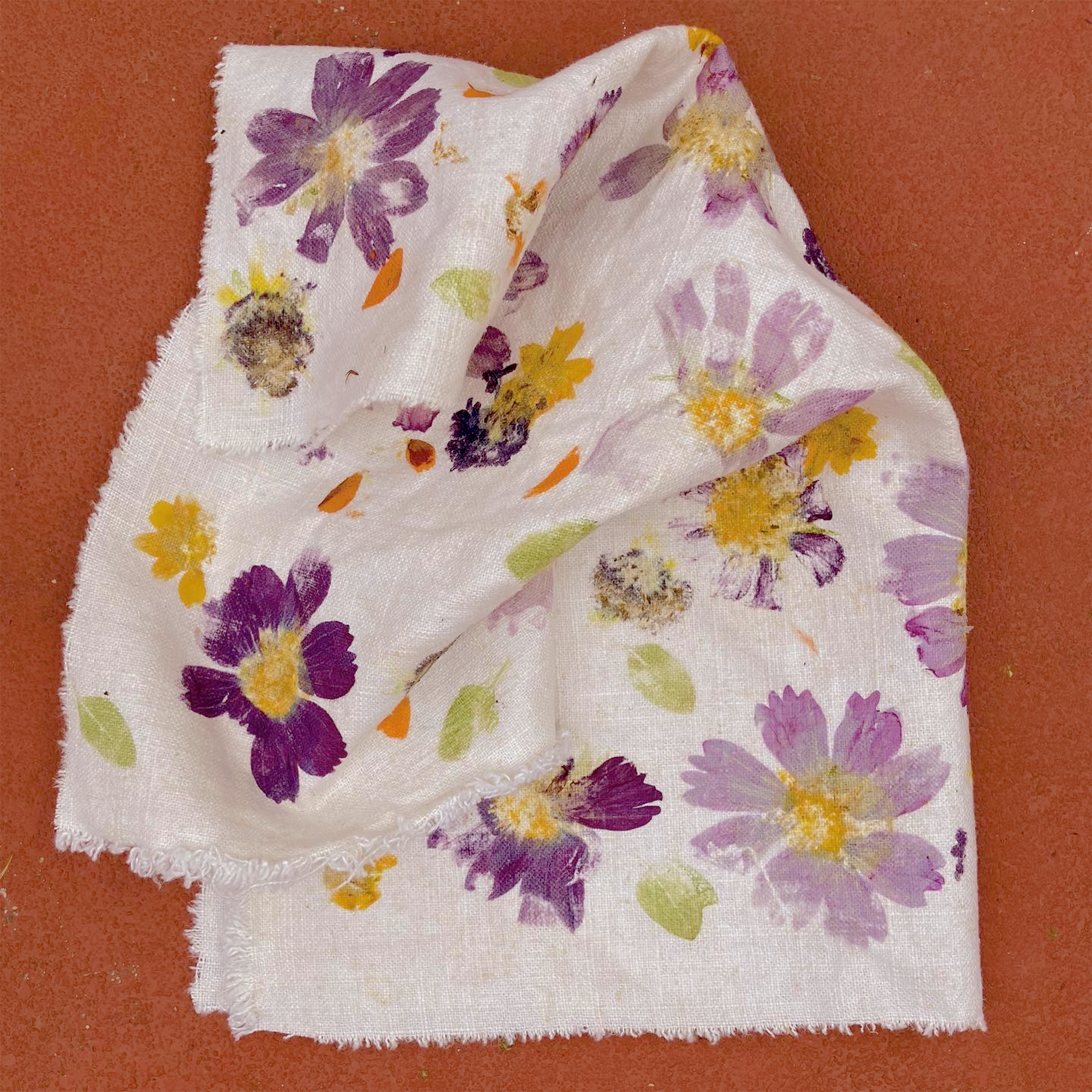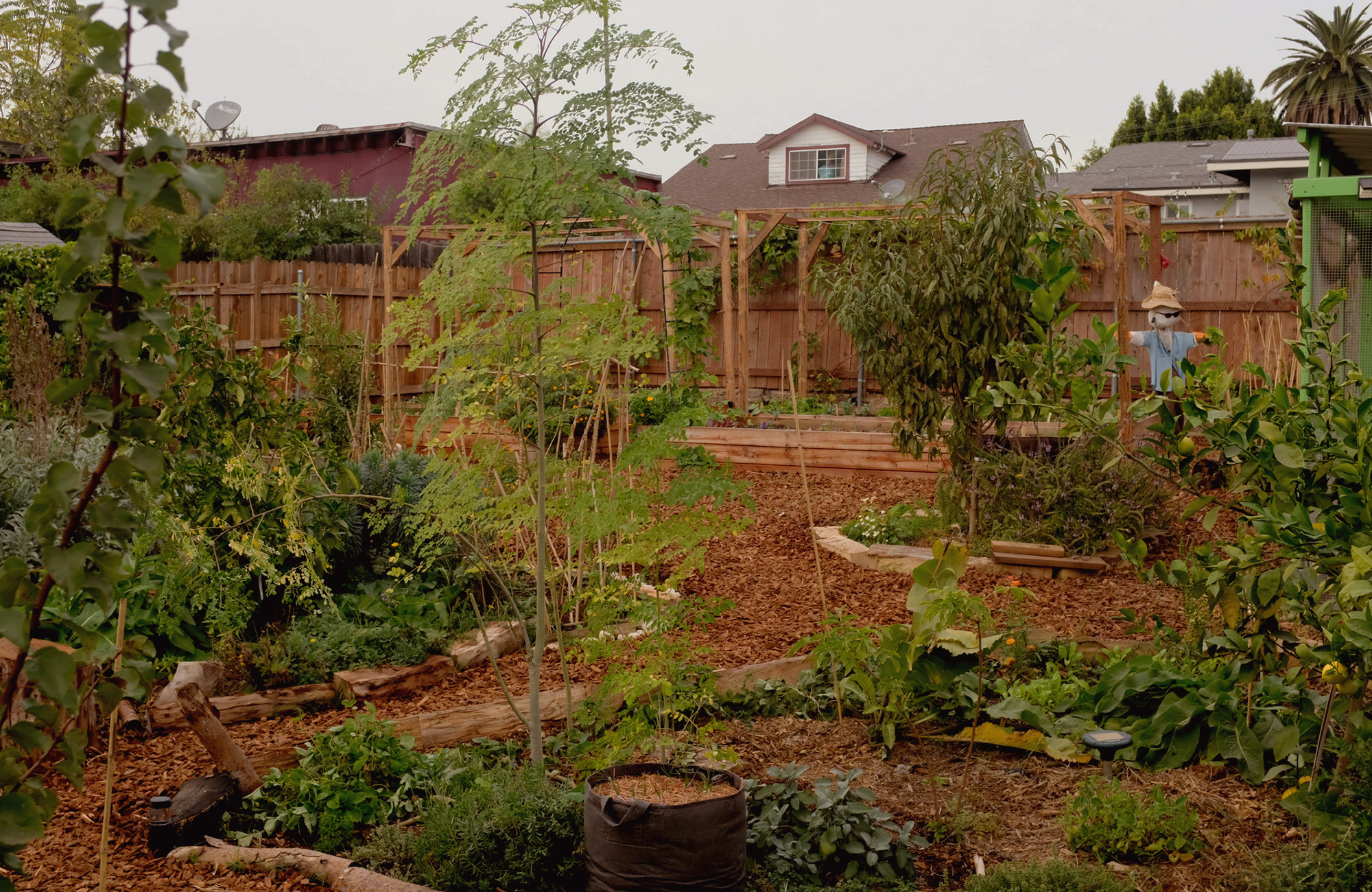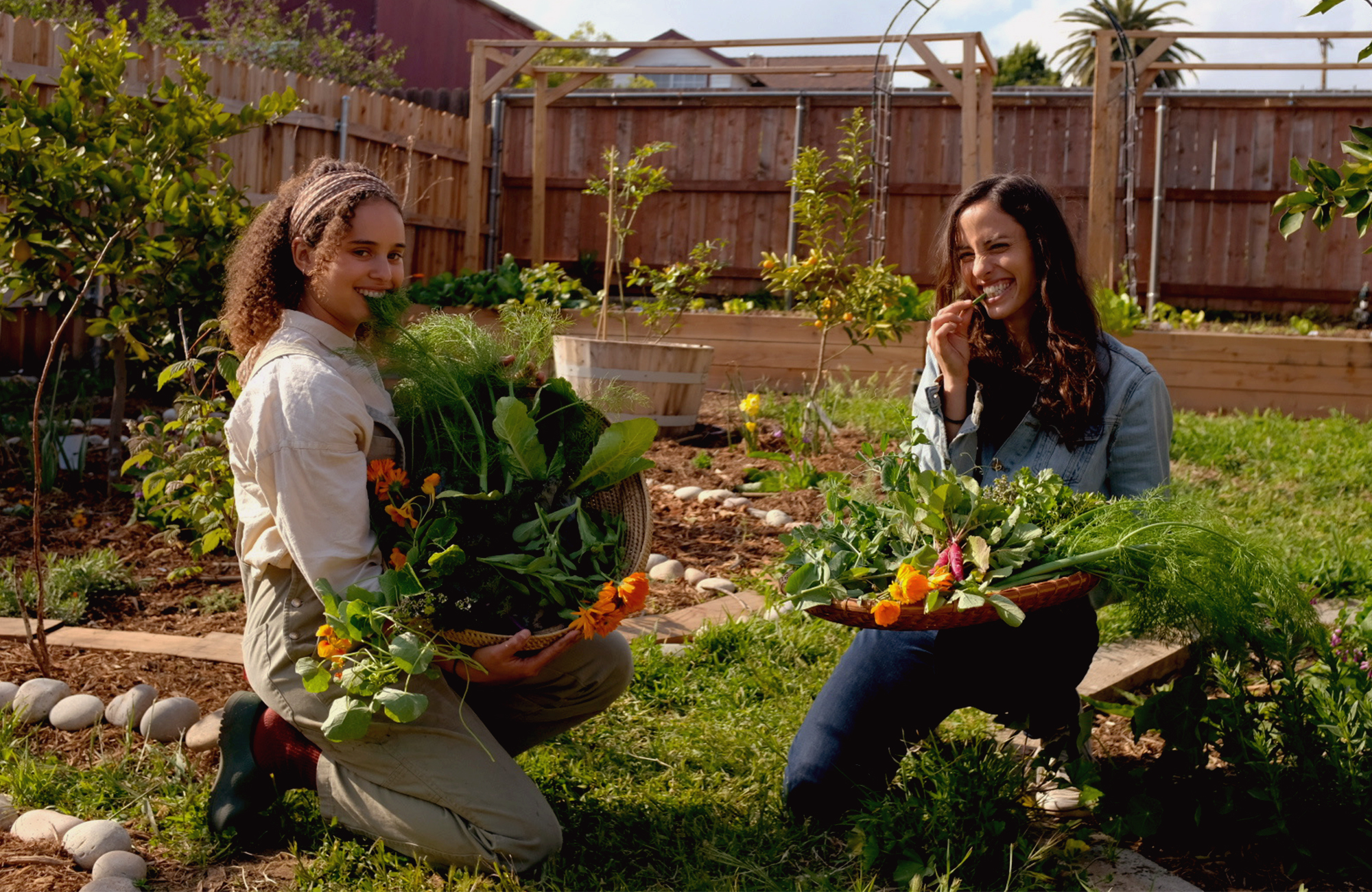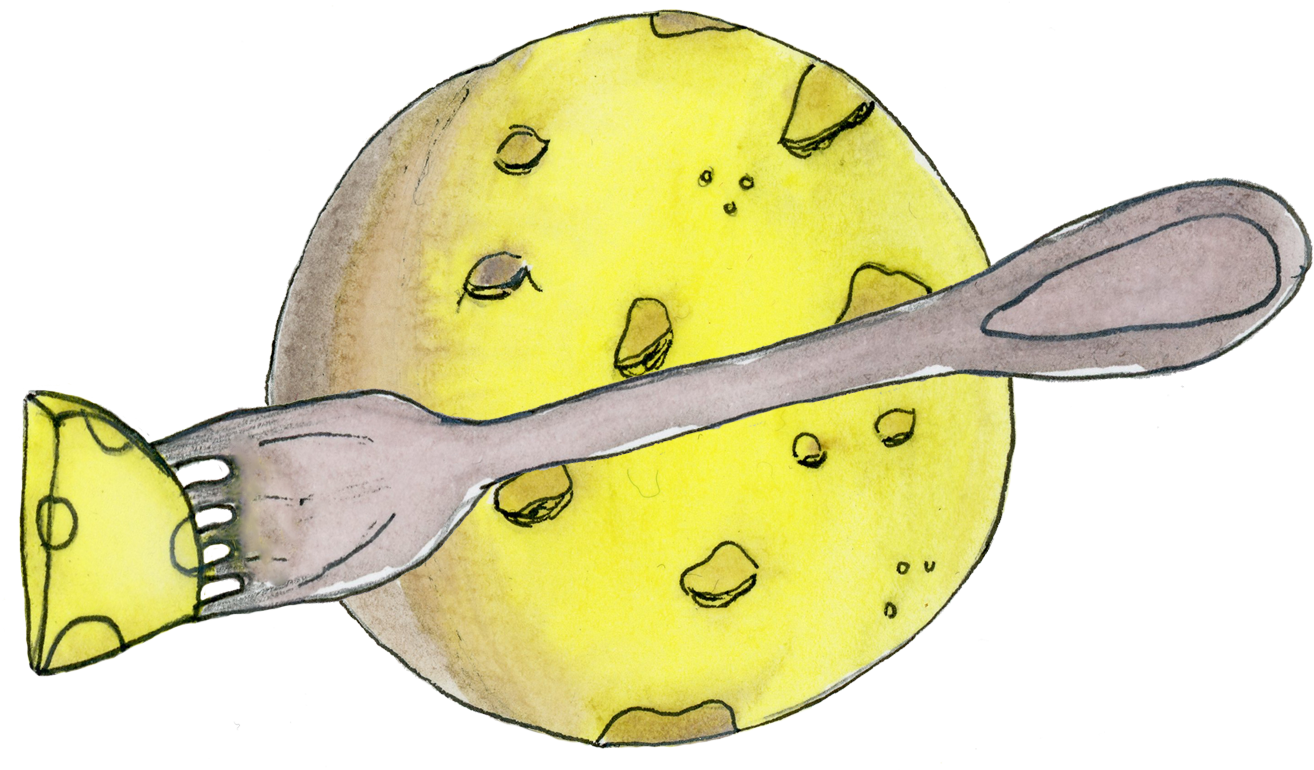interviews
Nina Weithorn January 2021
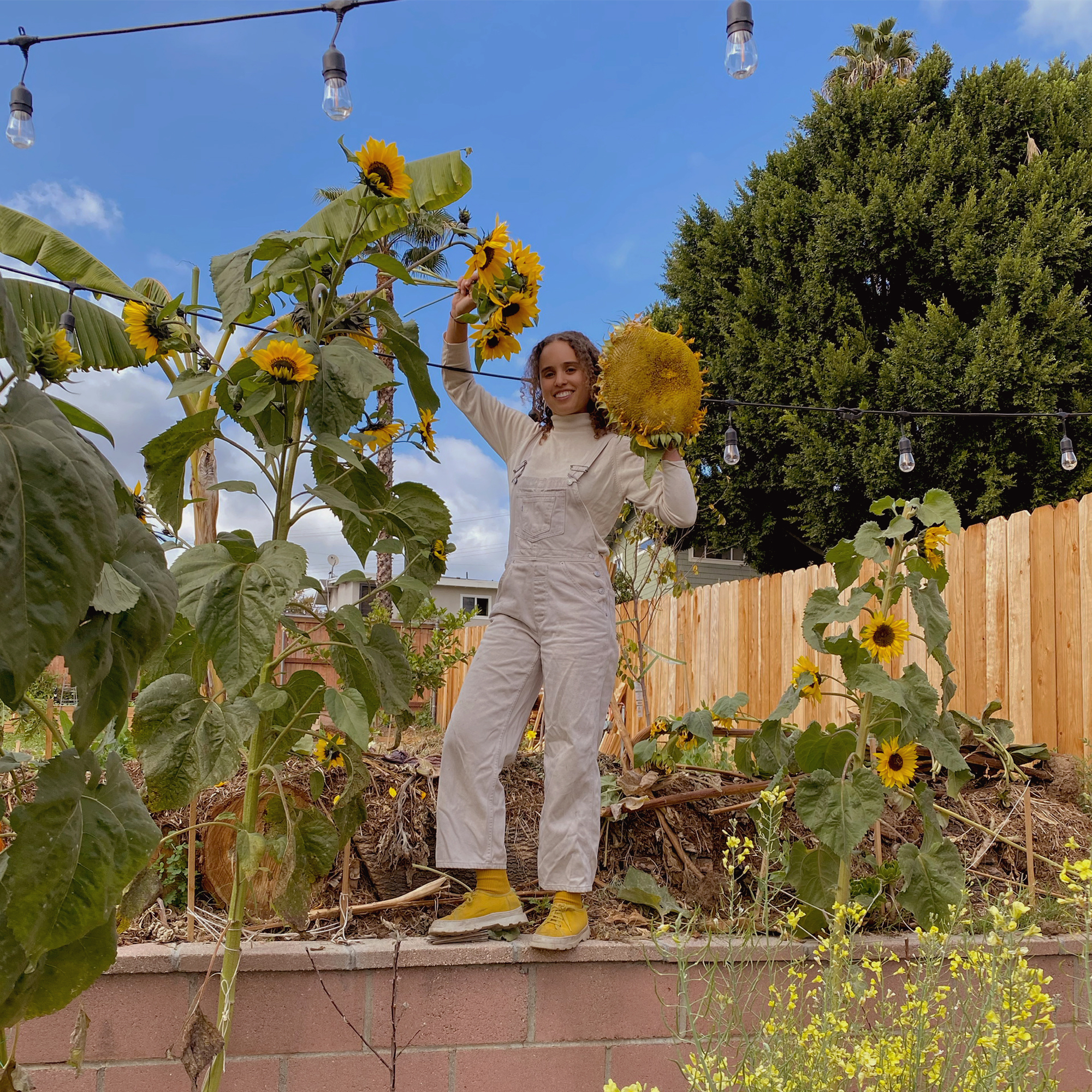
Can you tell me about where you grew up and what you grew up eating?
I grew up in Santa Monica. I have a lot of memories of going to the Santa Monica farmer’s market with my mom especially in the summer and picking out a lot of stone fruit, I really loved nectarines and strawberries when I was little. My mom is an amazing cook and got into cooking because of her grandmother who was also an amazing cook too. I was a really picky child so it was kind of rotation of a few things like lasagna, plain grilled salmon, white rice with butter, plain sautéed vegetables, chicken fingers and fries – we weren’t a big fast food family so my mom learned how to make chicken fingers and fries from scratch.
That honestly sounds really good.
It was! It wasn’t until I was older that my palate developed and because my mom was the only source of interest in food, my interest in cooking and food production also came later.
So tell me how you got into gardening and herbalism.
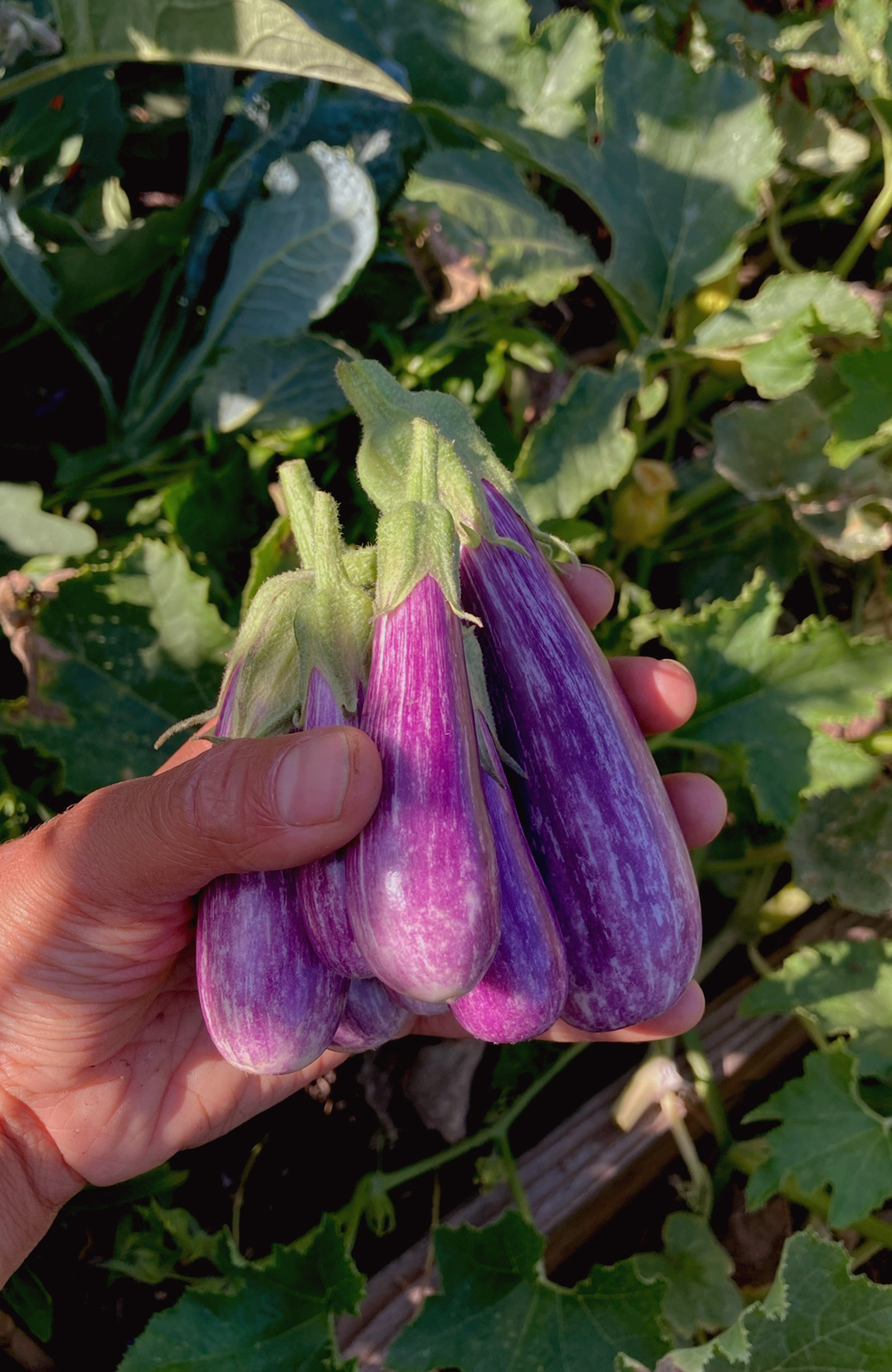

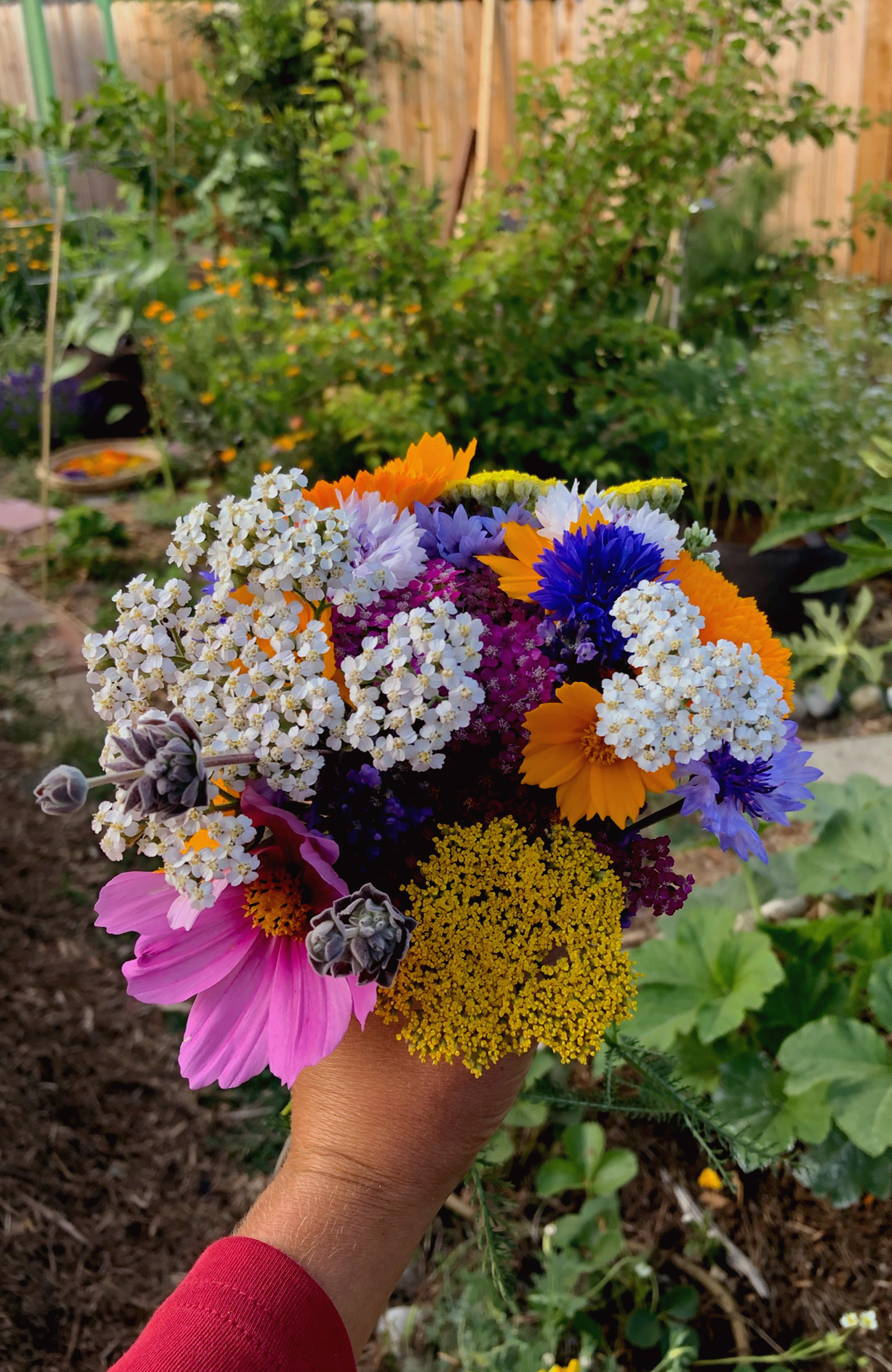
My mom had taught about a lot about cooking from what her grandmother had taught her so when I was in high school I started to have friends over for dinner. I was always the one to plan and shop for the meals and then also the one to do most of the cooking while my friends kind of just watched. But also around the same time when I was sixteen I started getting these kind of mysterious stomach aches that a lot people just attributed to stress which I did too, you know with graduating from high school and applying to colleges. But it started progressively getting worse and by the time I was in college I started having more serious gastrointestinal symptoms. I started going to doctors who were mostly white men who all told me it was in my head or women are prone to anxiety and that stomach aches come with that sometimes. I got all the tests done that they thought were necessary, got poked and prodded so many times and everything came back normal…
So I thought maybe it really was just in my head. Finally, when I was a senior in college I was at the point where I knew something was wrong. I had just gotten back from a semester abroad in South Africa. The day that I got home I started feeling the kind of pain you’re supposed to feel when your appendix ruptures, I could barely stand. I went to the emergency room and was finally diagnosed with Crohn's disease which is an autoimmune disease. At that point I was already really interested in food and natural forms of healing – I had tried so many different diets trying to heal myself before I got the diagnosis. I was really committed to as few medical interventions as necessary. I was already buying a lot of local food and going to the farmer’s markets and also started studying herbalism and different herbs that help with immunity and herbs that help with inflammation. I started eating fermented foods and probiotics to balance my gut microbiome and heal holistically. It worked better than any intervention that the doctors had recommended at that point. This was also after all the doctors had told me that there was no cure, that I would probably get progressively worse, that I’d probably have to get multiple surgeries and that it had nothing to do with diet.
So I thought maybe it really was just in my head. Finally, when I was a senior in college I was at the point where I knew something was wrong. I had just gotten back from a semester abroad in South Africa. The day that I got home I started feeling the kind of pain you’re supposed to feel when your appendix ruptures, I could barely stand. I went to the emergency room and was finally diagnosed with Crohn's disease which is an autoimmune disease. At that point I was already really interested in food and natural forms of healing – I had tried so many different diets trying to heal myself before I got the diagnosis. I was really committed to as few medical interventions as necessary. I was already buying a lot of local food and going to the farmer’s markets and also started studying herbalism and different herbs that help with immunity and herbs that help with inflammation. I started eating fermented foods and probiotics to balance my gut microbiome and heal holistically. It worked better than any intervention that the doctors had recommended at that point. This was also after all the doctors had told me that there was no cure, that I would probably get progressively worse, that I’d probably have to get multiple surgeries and that it had nothing to do with diet.
Oh wow really?
Yeah I’d been told by a lot of gastroenterologists who went to medical school that diet had nothing to do with it! But I’ve seen a huge change in my body and overall health since changing my diet and especially since growing my food I can feel the difference in my body.
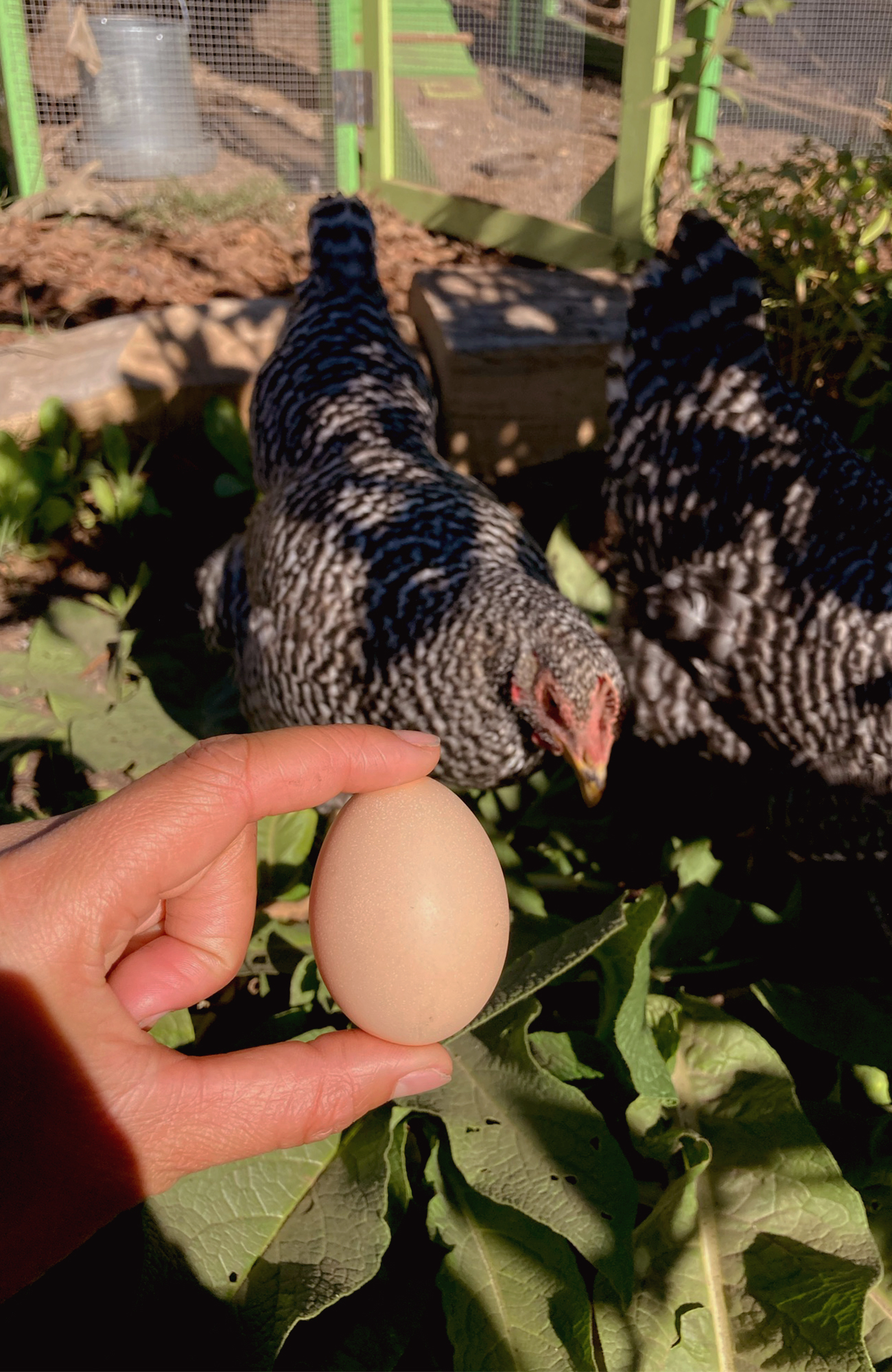

Wow that’s wild. So when did the gardening begin?
So gardening came around the same time. When I was in college I was interested in nutrition but it was too clinical for me and also kind of exclusionary – a lot of people can’t count the amount of nutrients and calories in their diet and I also don’t think it’s always a very productive way to think about food. So I just started looking at the bigger picture. I went to school in New York City where there is a big urban farm community so I started volunteering at urban farms. I eventually got an internship with Grow NYC which is the organization that puts on the farmer’s markets around the city. I worked at markets as basically the farmer’s market manager’s assistant doing EBT, Snap and talking to the farmers. I got to learn about all the farmer’s stories, about how they started growing, how they got invested in the crops they were producing. In that job I felt like I was just seeing the end result and then got more interested in the beginning of the process from seed. I worked at the Brooklyn Grange and Edible School Yard in Brooklyn and after those two experiences I was very sure I had just keyed into what I wanted to do – there was just nothing as calming and nourishing as harvesting produce on a rooftop in New York City which is just such a chaotic, crazy place. It just felt like “this is it for me!”
I know you went to work in Hawaii after you graduated, can you tell me about your time there?
Yeah so after living in New York for four years I felt like I was at my wit's end and on a whim applied for a job at an elementary school in Hawaii; they were looking for a garden teacher. At the time I don’t think I realized how casual jobs over there are but I ended up getting it after just one phone interview. So I moved there and got to teach kids on half an acre of space which was crazy to have that much space after coming from working on rooftops in New York. I also knew basically nothing about tropical agriculture. There were banana trees, mangoes, star fruit, vanilla bean, turmeric, and ginger! That whole year I sort of felt like I was only one step ahead of the kids in terms of teaching. I had never seen ginger growing, so read a ton on it and did the same for basically everything else. I kind of felt like I was winging it, but I was really motivated to stay on top of educating myself so that I could give these kids as much of the important knowledge of where your food comes from as I could. So I did that for a year and it was really rewarding in a lot of ways but also was a strange working environment. I think a lot of white people move to Hawaii from parts of the US or Australia and it’s really problematic – Hawaii has a really trauma-filled colonial history as do most places. There’s a lot of tension between the indigenous and Polynesian people and the white people who go there and appropriate the Polynesian culture. So I also felt a lot of tension between the teachers at the school who were mostly white, and the kids at the school, who were mostly local Hawaiian-Polynesian kids. There was a lack of acknowledgement of that tension there and that dynamic exists everywhere where there are indigenous people that were colonized by white people; it’s the case here in Los Angeles as well. Coming from New York where people talk about that dynamic a lot, I was ready to bring that into the curriculum and talk about Captain Cook who there’s a monument for but who wasn’t a hero and here’s why. A lot of the teachers were like, “we don’t talk about that here…” But they weren’t in my classes so I talked about it. So it was an interesting year in Hawaii but I ultimately didn’t align with that way of life.
So then you came back to LA and started working for some different small agriculture businesses. What were those jobs like?
Yeah, I worked at a farm in Malibu called One Gun Ranch, then for Fruitstitute, a fruit tree pruning business and now for Urban Farms LA, an edible gardening business. Those experiences were good proffesionally and pragmatically, they paid the bills. Fruitstitute was great especially because they do wonderful work environmentally; everyone in LA essentially has a fruit tree on or near where they live.
Can you tell me about regenerative soil practice?
Yes, so first thing I want to say is that the term itself is accurate in terms of what it does for the soil but is in fact very white washed. There’s a lot of co-opting of what are actually indigenous land management practices, like permaculture is another word that has been adopted in that way. However, soil restoration is really important. There’s a lot of depleted soil all over this city and in my own backyard when I first got access to the space the soil was just compacted and dry. When you’re restoring soil the first thing you want to do is add life back into it, like if you stick your hand in it there should be earthworms and activity! There are a lot of different ways to restore soil but the main thing is you want to add in organic material, you can to keep it moist and covered. So I did a method called sheet mulching, which there are many different ways to do it but the basic method is starting with a layer of cardboard or newspaper and then a layer of compost, worm compost or manure, something that is really nitrogen rich and has a lot of active microbiology. On top of that you add a layer of mulch so that can be dried leaves, shredded newspaper, or wood chips which is what I used and you let that break down all over time. As that breaks down what you get is a new layer of soil on top of the depleted soil and then it all just becomes one.
![]()
Photo by Mikey Van Beuren
So how does it become one?
Basically everything you’ve added on top of the original layer of soil breaks down, the earthworms and whatever other microorganisms are in there go down into the old soil and it all becomes one! And then it becomes a fertile space that you can plant in. There are a lot of ways to do it but I always say the first thing to do is add compost. Also, if you live in a city, get a soil test because heavy metals are prevalent; you don’t want to be growing food in soil that has lead or arsenic in it. And then of course water is the key to it all!
Ok wait I want to go back to regenerative soil as a term. Do you think there is a different term we should use and also do you think people are being misled because it’s being reclaimed by white owned businesses?
I think white owned businesses have really over-used the term regenerative farming and soil regeneration, so now when people think about those terms they associate them with places like Kiss the Ground. There is a lot of critique about their documentary because they’re talking about regenerative farming methods as if they invented them when really they’re indigenous land management practices. There’s one slide in their documentary where they’re talking about all the ways that you can restore soil and sequester carbon and in one little box there was text that said “indigenous land management practices” and then in another it said “rotational grazing and all of these other things,” when really everything they listed should go under indigenous land management practices! What bothers me most about the term is that it’s become wrongly associated and attributed to the wrong people. In terms of an alternative I think indigenous land management practices is an accurate replacement. It’s all about working in partnership with the land and not against it or just trying to have complete control over the processes that happen. When I garden I’d say that I have a lot of soil restoring techniques.
Can you tell me about some environmental activist orgs, farms and books that inspire you and that you look to?
Ahh there are so many! The first person I think of is Leah Penniman from Soul Fire Farm. Her book Farming While Black is my go-to for everything. Soul Fire Farm teaches afro-indigenous farming practices; they talk a lot about decolonizing agriculture and advocate for education surrounding farming and also reparations for Black people in America and giving land back to people who’ve been excluded for so long. There’s also Chris Newman who's the founder of Sylvanaqua Farms in Virginia. He has a huge poultry operation but also does a lot of take downs of white male farmers who have very colonial perspectives on farming on social media, he did one about the Kiss the Ground doc, and he’s a big advocate for indigenous land management practices. His dream is to have a whole network of BIPOC owned farms in the area surrounding D.C. There’s also Amber Tamm, I love her whole mission of having an education-based farming collective in NYC but also upstate; it’s a huge endeavor but it really is possible.
Ziza is a collaboration between me and Nina Anakar, a Moroccan chef who also lives in LA. Nina and I met at a Fruitstitute fundraising event and I was assigned to help her with all the catering prep stuff and we just hit it off. We had a lot in common, we had also been disheartened by working for people who did things around food and agriculture in a way that was very inaccessible. When I got access to this land, I had already decided I was going to plant a ton of fruit trees and perennial herbs and had also been working for other Nina when she still had her catering company (which was also called Ziza). One day she came over and was looking at the garden and said we should do something together. I also love to cook but with the amount of time I spend on the yard, I don’t have enough time to process herbs, make food, preserve and make medicine so Nina took that over. For the last almost year, we’ve been growing tons of medicinal herbs, vegetables and fruit trees and Nina has been harvesting it and creating pantry items with it. We have spice mixes, medicinal tea blends, preserved lemons and it’s made mostly with what was grown here or from local farmers. We have a huge inventory of stuff and in the near future are planning on doing a pop-up where Nina cooks meals with food from the garden as well as sell our products. Of course with Covid the logistics of that are challenging, but that’s our goal. On the non-culinary end of things, I have been making a lot of accessible educational resources for people to have and I share those on Instagram. I’ve made ones about saving seeds, restoring soil, composting, and then Nina adds in educational resources on how to preserve food and use what’s in abundance during each season.
We’re still working out the exact structure of what we’re doing especially during Covid because initially I wanted this to be more of a community space where people in my community, friends and family could come. I really love teaching also and that has been hard especially because I have a compromised immune system because of my Crohn's disease meds so don’t feel comfortable having a group of people in my space at one time. But my hope for the future is to primarily be a teacher and to share with others what I’ve done. I did get to teach a class on polycultures at my community garden in El Sereno. Polycultures is the interplanting of larger food producing trees or shrubs with smaller medicinal herbs or vegetables in the same area – the idea is that everything you plant has resilience and that there’s mutual benefit in diversity. For example, around a lot of the fruit trees here I have a plant called comfrey which is this big plant with fuzzy leaves that has a really long taproot and it can mine nutrients and bring them to the surface for other plants. Yarrow is a good one too because it attracts a lot of pollinators. I’ve also been thinking of creating an online course that will be the most accessible resource for people during the pandemic. Since it began there’s been a huge uptick in people starting their own gardens and I just want to help people feel confident and see that it’s not that complicated or hard to grow your own food.
Wow I just feel so inspired by what is to come! One last question for you – what’s your favorite seed that you are most excited about for the coming season? And where did you order it from?
I have hibiscus which I got from this amazing woman named Nancy Redfeather in Hawaii. She is a seed saver and an amazing gardener and educator who started a seed company! I just planted them a couple weeks ago and I’m really excited because the plant has the amazing flowers that can be used for dye but the leaves are kind of sour and taste like the yellow sour flowers that pop up in the spring. It’s just such a cool plant! I’m also really excited about my banana tree!
I forgot to ask about your natural dyeing projects!! Can you say a little about that?
I really imagine myself as an old lady with a whole garden just filled with dye flowers. There is nothing more satisfying than getting a flower and putting it in a big pot of water, boiling it and seeing it change to bright purple, orange, or pink! I got into natural dyeing a little bit in college but especially in Hawaii because there was just such an abundance of new plants. I got into the habit of taking plants, boiling them in a pot and seeing what happened; sometimes there was color, sometimes there wasn’t. I also grow indigo and cultivated my dye vat from fermenting the plant. My favorite plant to dye with might be marigold; I love the deep mustard color that comes out of them! I also love that natural dye is another way to give food scraps a second life – like avocado skins and pits. Ah I’d just dye things all day if I could, it’s so fun.



